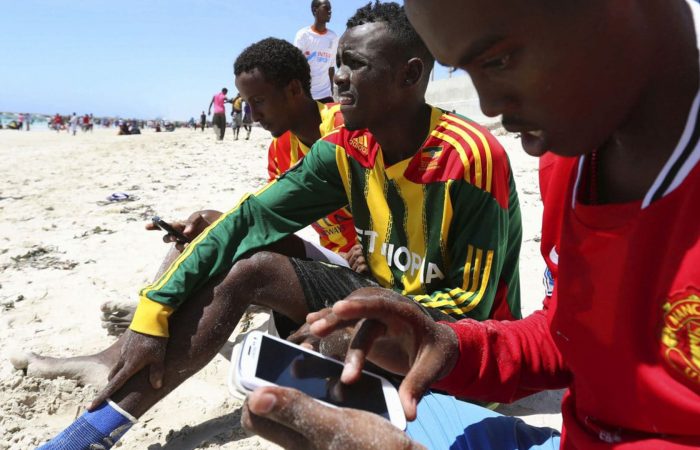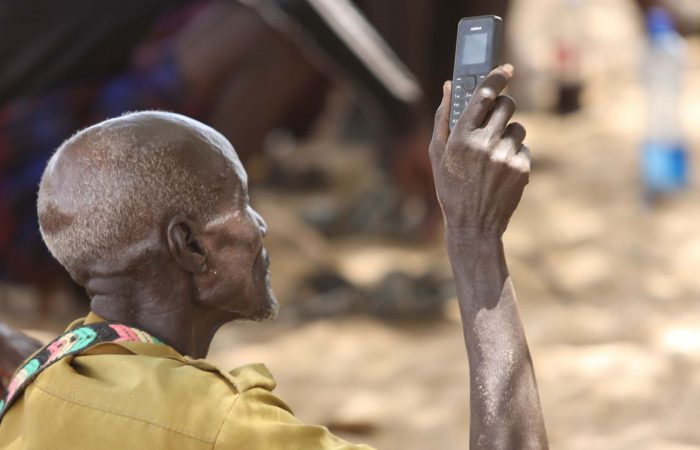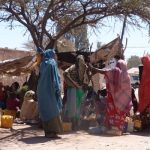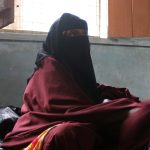For many of us reading this, the digital realm seamlessly integrates with most aspects of our lives: we rely upon the internet for work, our phones to connect, and a multitude of digital services to inform and empower us. It’s so pervasive, that we rarely consider how access to the digital world confers power, and that — as with most forms of power — it is unequally shared among our global community.
Those who are already disadvantaged — poor, rural, older, and female individuals — disproportionately make up the 53% of the world’s population who are not digitally connected. The so-called ‘digital divide’ perpetuates existing inequalities by restricting peoples’ ability to exercise their rights or participate in public life, the economy, and society.
The gender digital divide
One of the most striking digital inequalities is that between the genders:
- 250 million fewer women are online compared to men, and once online they are 30-50% less likely to use the internet for economic and political empowerment.
- Worldwide, women are 14% less likely to own a mobile phone than men.
- These disparities are contributing to an emerging data gender gap and potential data bias.
“The gender digital divide is both a consequence and cause of violations of women’s human rights”
states a new report by the United Nations High Commissioner for Human Rights, which was presented to the Human Rights Council in Geneva this month. Africa’s Voices contributed to the report, sharing our experiences of the frequent exclusion of women in digital forums — specifically, women’s low participation in interactive radio shows via SMS.
Our insights began when Africa’s Voices was still part of Cambridge’s Centre of Governance and Human Rights (CGHR). A CGHR household survey in Kenya and Zambia (2012-14) found that nearly twice as many men engage in interactive radio shows by SMS as women. Consequently, women’s diverse voices are often not being heard and their perspectives not included as much as men’s in discussions and decision-making.
Much of the digital divide literature focuses on whether people can access and afford technology. Yet our research found that while these factors are necessary, they’re not enough to explain why women are so underrepresented. For example, in Kenyan constituencies, there was nearly universal access (over 96%) to mobile phones and no gender gap in access. Irrespective of mobile phone access, women are less likely to listen to and participate in interactive shows (controlling for age and education). Why could this be?
The overlooked role of socio-cultural factors
Forums, digital or otherwise, are shaped by socio-cultural norms and the collective beliefs of the discussants. Norms can enable or restrict who participates and how, such as the suitability or appropriateness of women raising their voice in a public space.
The CGHR research found widespread perceptions that men discourage women from participating in interactive radio shows, and a perception that women are not interested in current affairs or politics. Beliefs such as these can spur a self-fulfilling prophecy.
Sharath Srinivasan and Claudia Lopes (2017) explain: “as male radio hosts and guests discourage participation from women, radio shows are less inclusive, women become less interested in the shows, reducing women participation and reinforcing the idea that women are not in fact interested in these topics”.
Opportunities to realign gender relations
The bias towards men in interactive radio shows suggests that these are forums which reproduce existing social relations. However, these spaces also present an opportunity, as they hold the potential to help realign social relations and gender norms if the conversations are convened and curated in a way that supports greater female participation.

Sally from Beat FM was a radio host for Africa’s Voices interactive radio project on maternal health in Uganda.
At Africa’s Voices, we employ strategies to overcome some of the socio-cultural barriers to female participation and boost inclusive discussion. This is especially true when our target populations, that is, those whose opinions and beliefs we aim to capture, are girls and women. Measures we take include:
- Training radio hosts on inclusive engagement strategies that have been developed from our research. For instance, the host should read on air more text messages from female participants than males, helping to realign the forums to be more gender-balanced and encourage other female listeners to contribute by hearing voices of women like them.
- Working with female radio hosts, where possible.
- Testing radio scripts and questions with female focus group discussions in advance of broadcasts, and applying lessons learned accordingly.
- Scheduling shows at times that are most convenient for women in the given population.
- As we have the capabilities to process and analyse local language data, all interaction and data gathered are in local languages so as to include women from linguistic minorities.
- Participation by SMS is always free for the sender so that there is no cost barrier.
Our efforts at Africa’s Voices have been fruitful. For example, 49.6% participants in our interactive radio project on maternal health in Uganda were female. For an ongoing interactive radio project with UNICEF Somalia, 44-46% of participants are female.
Figure from our report on our pilot project for UNICEF Somalia
Don’t forget informal and intangible exclusions
The Sustainable Development Goals (SDGs) dominate the current development discourse. Goal number 5 focuses on gender equality, and one of the eight targets (5B) is to ‘enhance the use of enabling technology, in particular information and communications technology, to promote the empowerment of women’.
This is a worthy goal, aimed squarely at reducing the digital gender gap. And yet the indicator for this target, that is, how it will be measured, has a sole focus on women’s access to mobile phones. Our research and projects have found that even when formal exclusions are removed, and access to technology is equal, informal and intangible exclusions such as social norms can prove far more powerful and should not be ignored.


Participation in the digital world relies on many factors: education, infrastructure, socio-cultural norms, legislation, affordability, security, and many others besides. Increasing access to technology alone will not bridge the gender digital divide.
Fortunately, the 17 SDGs are diverse and comprehensive in their approach to addressing global challenges. When considered collectively, the SDGs provide a multi-pronged solution to reducing divides around the world: SDG 1 aims to eliminate poverty in all of its forms, SDG 4 is cheerleading parity in quality education, and SDG 9 promotes inclusive infrastructure and innovation.
At Africa’s Voices, we’ll keep sharing our lessons, and be flying the flag of the role of socio-cultural factors in the digital divide, so that together with others we can help to make digital inclusion — and the power that comes with it — a reality.

References & Sources:
- Report of the Office of the United Nations High Commissioner for Human Rights on ways to bridge the gender digital divide from a human rights perspective
- Politics and Interactive Media in Africa, The Centre for Governance and Human Rights, specifically:
- PiMA Working Paper #4: Interactive media audiences in Africa: A comparison of four constituencies in Kenya and Zambia
- PiMA Working Paper #9: Lopes, C.A. and Srinivasan, S., (2017). ‘Mediated sociability’: Audience participation and convened citizen engagement in interactive broadcast shows in Africa.
- Interactive Radio: A Toolkit for Radio Stations. Developed by The Internews Center for Innovation and Learning with CGHR research.





